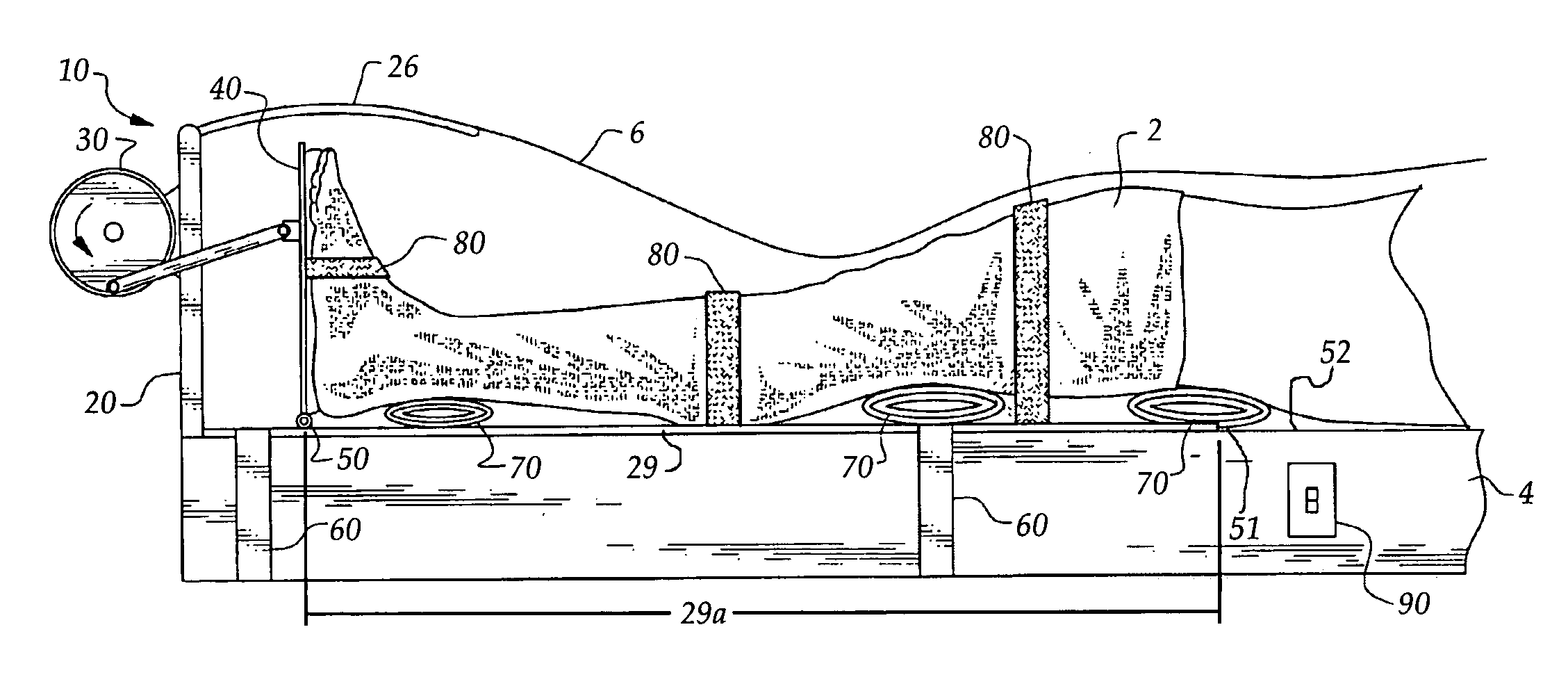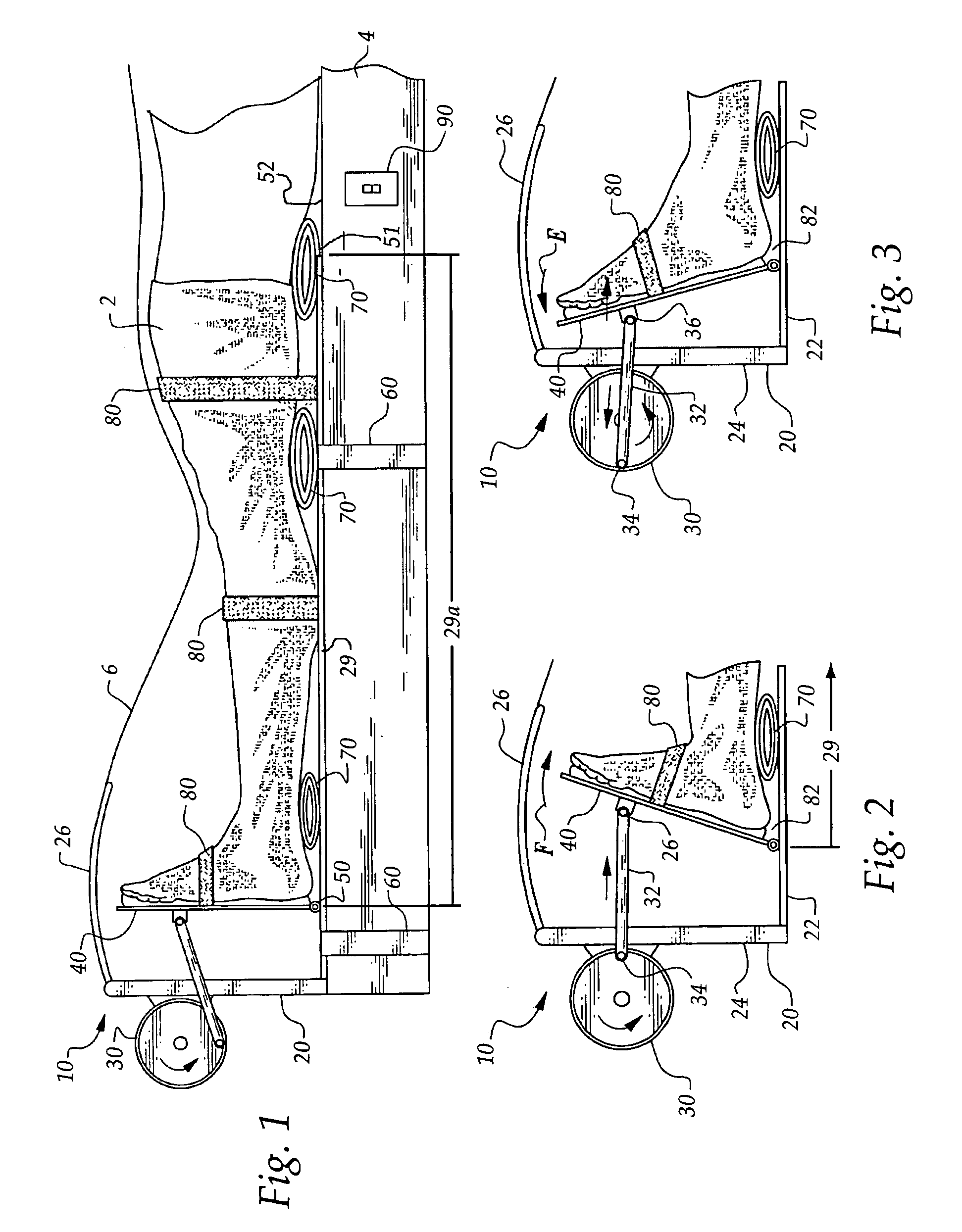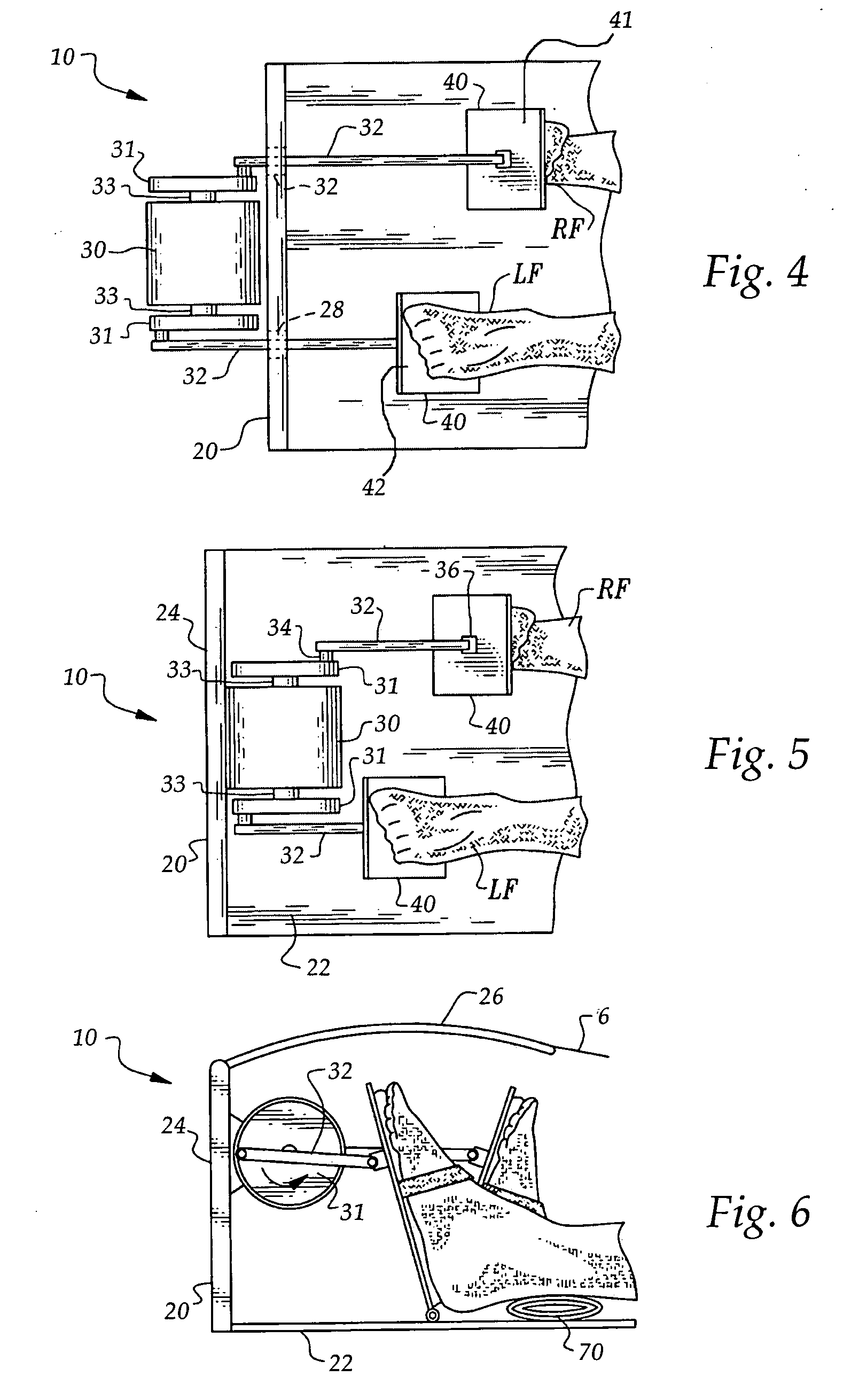Lower extremity passive muscle manipulation device and method
a passive muscle and lower extremity technology, applied in the field of motorized passive muscle manipulation devices, can solve the problems of unpredictably bringing on venous thrombosis, high risk of dvt and pulmonary embolism in spinal cord injury, stroke, etc., and achieve the effect of increasing blood flow
- Summary
- Abstract
- Description
- Claims
- Application Information
AI Technical Summary
Benefits of technology
Problems solved by technology
Method used
Image
Examples
examples
[0061] Several objects and advantages of the present invention in the following examples can include: [0062] (a) Providing a reliable mechanical device and method for preventing DVT by mechanically stimulating the calf muscles by alternate plantar and dorsal flexion of each foot, thereby naturally inducing increased blood flow in the soleal venal plexus, without the risks and irritations common to the prior art. [0063] (b) Mimicking the natural action of the calf muscle during use. [0064] (c) Avoiding misdirected vein compression which might actually induce thrombosis, as with pneumatic compression techniques. [0065] (d) Simplifying the administration and operation of the device. [0066] (e) Eliminating the use of sticky electrodes necessary for electrical stimulas. [0067] (f) Working regardless of the obesity and thickness of fat tissue of a user. [0068] (g) Preventing uncomfortable hair entanglement. [0069] (h) Simple and flexible application to even a comatose patient. [0070] (i) ...
PUM
 Login to View More
Login to View More Abstract
Description
Claims
Application Information
 Login to View More
Login to View More - R&D
- Intellectual Property
- Life Sciences
- Materials
- Tech Scout
- Unparalleled Data Quality
- Higher Quality Content
- 60% Fewer Hallucinations
Browse by: Latest US Patents, China's latest patents, Technical Efficacy Thesaurus, Application Domain, Technology Topic, Popular Technical Reports.
© 2025 PatSnap. All rights reserved.Legal|Privacy policy|Modern Slavery Act Transparency Statement|Sitemap|About US| Contact US: help@patsnap.com



